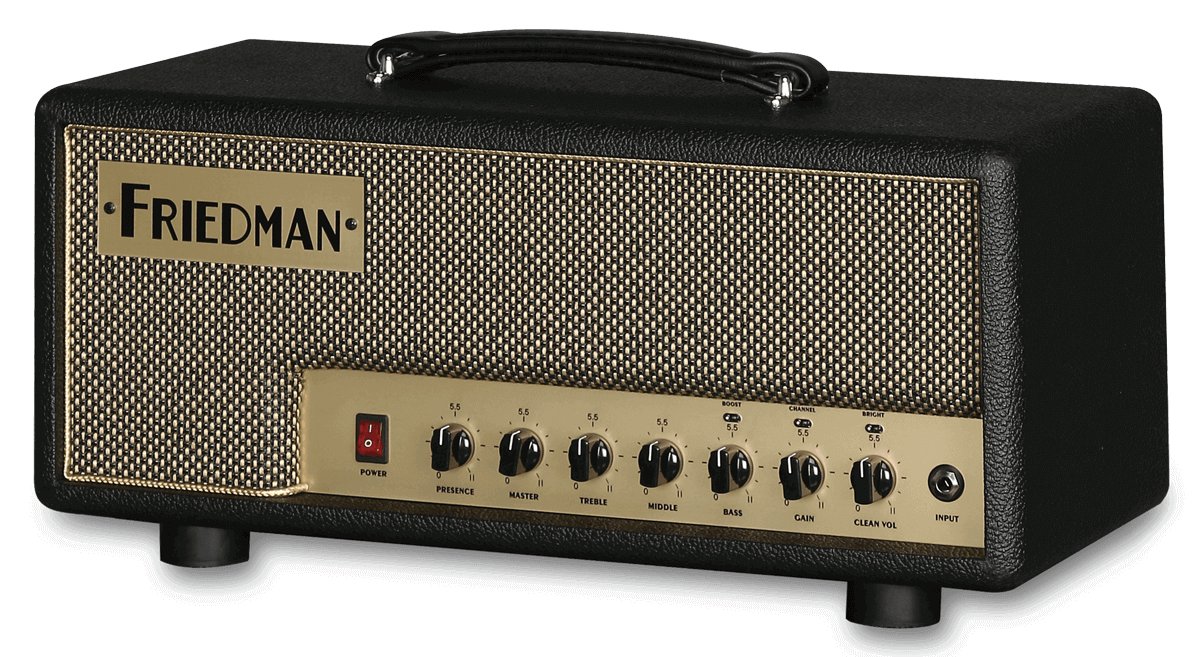The Future of Guitar Amplification
I'm not a professional futurist but in this prediction I am certain.
Honestly, how many revolutionary paradigm shifts can one generation experience? The way we live changes so fast that older people now look to younger people for wisdom and advice on how to navigate the world, a phenomenon that Freya India at the end of an episode of the Modern Wisdom Podcast cites as a source of anxiety for young people. After all, the young are supposed to look to the older for guidance, not the other way around. If the adults don’t know what’s going then on who does?
Now it feels like adults go to young people to get guidance about the world and that makes young people anxious because they’re like, “Where are the adults telling me what to do?”
-Freya India
From vinyl to streaming, land lines to smart phones, and Playboy to Porn Hub, it feels like every aspect of modern living has continued to degrade into something more modern each day. This is true of guitar amplification as well.
The current state of guitar amplification is on my mind because, after 10 years with the current generation of Helix amp modeling hardware, Line 6 has announced the upcoming release of their new hardware, Helix Stadium.
What the hell is a “Helix amp modeling hardware” you ask? You must be old so allow me to explain how to navigate the new modern guitar amplification world.
Back in ancient times, guitar players used heavy furniture boxes called guitar amplifiers to make the sound of their guitars louder. These amplifiers used vacuum tubes, diodes, and capacitors to process the guitar’s signal. This signal would then get sent to a terrible sounding speaker (the tone of these speakers is preferred by guitar players to this day, myself included) which would shake the air more violently than an unplugged guitar could, making the guitar sound louder. Believe it or not, this method of processing the electric guitar is quickly becoming a novelty.
Amp modeling units, like the Line 6 Helix, are computers. They use software to process the electric guitar’s signal rather than tubes and capacitors. Amp modelers have taken every aspect of the analog signal chain and somehow put them into algorithms. These algorithms produce eerily accurate representations of classic real world guitar amp sounds.
What would be the benefit of ditching real amplifiers for modelers? There are a few gigantic disadvantages of old school guitar amps.
Tube amps tend to be heavy. The Fender Deluxe Reverb, perhaps the most popular guitar amp of all time, weighs in at 42 pounds. Go to any online forum discussing tube amps versus modelers and you will see a million posts that say something like, “I’m 72 years old and have had 3 discs replaced in my back, I just can’t carry my Fender Deluxe up the stairs anymore.” It’s so sad to read posts like this. If he was hardcore he’d put tone above all else, including his bodily health. No wonder he never achieved his dreams of rock and roll stardom. Get serious, bro. Of course I am kidding. Tube amps can be a real drag to drag around and that is reason enough to want to replace them with a computer.
The tone of a tube amp is volume dependent. Part of the sound of electric guitar is the sound of its signal clipping. I’m not an engineer but the way I understand it is that a signal pathway in a circuit has a certain amount of bandwidth. As a signal gets hotter it takes up more bandwidth. At a certain point the signal can start to outsize that bandwidth which causes it to clip. That clipping can be heard as distortion. It’s more complicated than that but that’s the basic idea.
Back in the 1940s and ’50s players discovered that when they tried to get their guitar amps to sound loud they would start to distort. Many found this distortion, this clipping, to sound desirable. As the decades moved on, amp makers incorporated different gain staging and circuitry to refine the way that their amplifiers clipped giving us many of the modern rock tones that we enjoy today. The thing is that because it’s all about ratios of signal strength within signal pathways, a particular tone is only going to be achievable at a particular volume. If you turn down the volume it will clip less, if you turn up the volume it will clip more. While there are modern solutions to deal with this, it remains an issue. 100% of the time, the person playing through the amp is the only one who wants it that loud.
Tube amps are expensive. A brand new Fender Deluxe currently costs $1,785.99. A software plugin that accurately models a Fender Deluxe can run you as cheap as $200. Plus, it only weighs as much as your laptop and sounds good with just headphones. While most players would like to own the real thing, buying one doesn’t really make sense financially for most use cases. Why are they so expensive? My guess is that they are more labor intensive to produce, are made up of more expensive materials, and cost more to ship and store. Dedicated hardware modelers can be made in modern factories already equipped to mass produce electronics, are made up of less expensive materials (probably made cheaper by economies of scale), are comparatively light and take up less space. And that $200 plugin I mentioned has no manufacturing or shipping costs. All these factors make amp modelers a more financially conscious option.
Of course, there’s always a rub. But I don’t think we’re there. Not yet at least.
Moore’s Law is the observation that every two years the number of transistors manufacturers are able to fit on a microchip doubles. Danny’s Law (that’s me) is the observation that every time modern computing is introduced into a previously tech free product a subscription fee will soon follow. Mercedes throttled their EQ EQE and EQ EQS models, putting the full potential of the engine behind a subscription fee. BMW charges a subscription fee for use of the seat warmers and Tesla requires a paid subscription for just about every feature in their cars you can think of.
Amp modelers are tech and these days tech companies seems to have one singular mission: To rent you your life. We used to own the turbo under our hood, but now we rent it. We used to own our music but now we rent it. We used to own our DAWs, word processing software, and printers, but now we rent them. Do we really think that Line 6, Neural DSP, Fractal, and Kemper don’t want to charge us rent, too? How much money per month are you willing to pay to unlock unlimited access to the Fender Guitar Amplifier Suite in your Quad Cortex? Or maybe you’ll need the Kemper Pro plan to use the tone prints you made of your own amp. Pretty soon I’m going to need a young mentor to teach me how this new subscription based world works.
I had a childhood without tech, a young adulthood with tech, and now, as I enter middle age, I want to age with dramatically less tech. I remember a time when people knew how to introduce themselves to strangers. A time when people had to talk to each other when waiting in line outside of a show. A time when our elders could share their wisdom and advice on how to navigate the world without the fear of being outdated. In the name of preserving what’s left of that old world I’m now convinced that it is my moral obligation to buy a tube amp.





